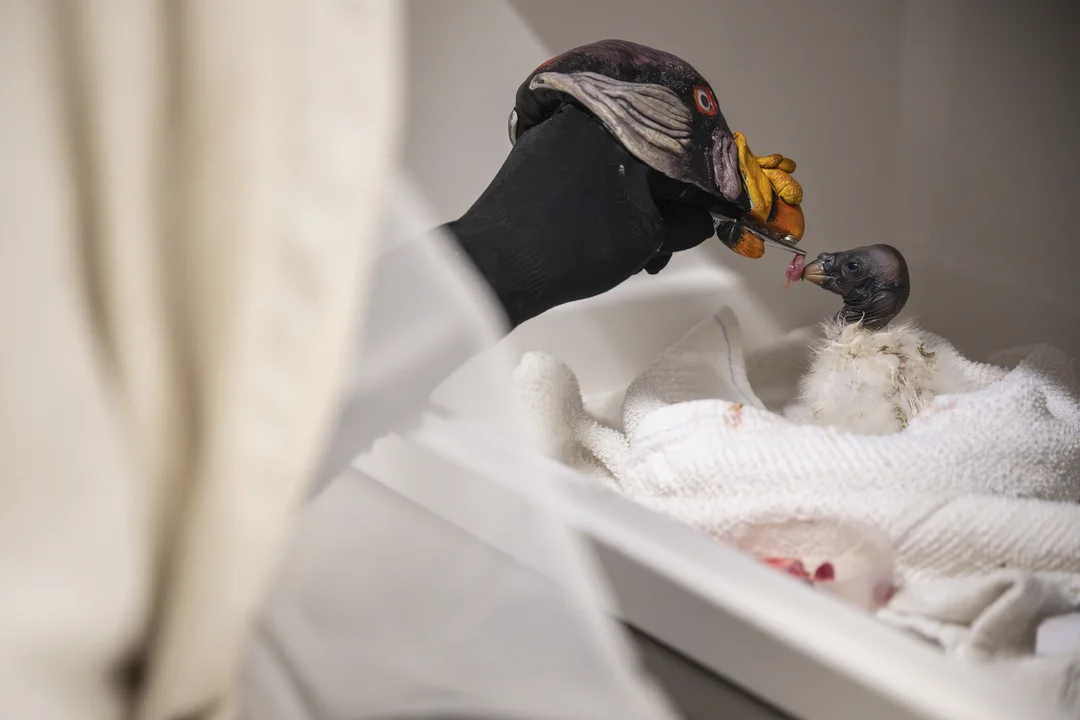
A Unique Feeding Technique for New York’s Baby Vulture
A baby vulture at the Bronx Zoo in New York is receiving a rather unconventional form of care; instead of being fed by humans, it is nurtured using a hand puppet designed to resemble another vulture. This fascinating method highlights the zoo’s commitment to ensuring that the chick does not imprint on its human caretakers and can develop its instincts properly, crucial for its potential to thrive in the wild.
The king vulture, known scientifically as Sarcoramphus papa, typically shows a tendency to neglect its offspring. To combat this, the Bronx Zoo staff has employed this time-tested approach of puppet feeding, a technique they pioneered over four decades ago while raising Andean condor chicks. Such practices have proven instrumental in conservation efforts, including the revival of the critically endangered California condor.
According to Chuck Cerbini, the Bronx Zoo Curator of Ornithology, the feeding sessions with the puppet are crucial in ensuring that the chick learns to recognize and relate to its species rather than forming a bond with humans. "At this stage of development, our animal care staff is feeding the chick with the Bronx Zoo-made puppet once a day... This method ensures that it does not imprint on humans," he stated.
The clever setup includes placing an adult king vulture in an adjacent enclosure, allowing the baby to observe natural vulture behavior. This exposure is vital, ensuring the chick does not lack crucial social cues and opportunities for learning. This innovative feeding method not only showcases the zoo's dedication to animal welfare but also its role in species preservation.
This chick, the first of its species to be hatched at the Bronx Zoo since the 1990s, represents a significant genetic opportunity. The zoo hopes to ensure that the lineage of its 55-year-old father continues since he only has one other living offspring. As this young bird grows, it symbolizes both the challenges and the achievements in the field of conservation.
As we continue to explore the methods that wildlife organizations employ to nurture endangered species, this baby vulture's story reminds us of the delicate balance between human intervention and the natural world. What else might we learn from such fascinating techniques? Feel free to share your thoughts below!